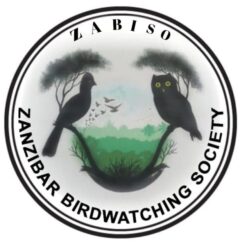History:
Introduced in Zanzibar[1] in the 1880s by British civil servants, the House crow (Corvus splendens), in the absence of natural predators and a growing presence of organic waste, has increased their population and range drastically to become a pest of considerable importance in Zanzibar and the current population is about 1.2 – 1.5 Million.
The House Crow is considered a pest by Zanzibar Government for more than 100 years, showing the importance of a new eradication program as proposed by ZABISO.
A brief overview of relevant previous eradication programs:
1. In 1917, only about 40 years after the introduction of The House Crow was considered a problematic pest, particularly being associated with many environmental and social issues for a long time. An eradication campaign started and continued for 31 years until 1948
2. In 1995 the long-established population of House Crows in Zanzibar was reduced by 80% through an intensive eradication program started in 1990 and funded by the Finnish International Development Agency (FINNIDA). The program managed to cut population with 65,000 birds (85% urban and 65% rural). The project was terminated in 1996.
3. In 2012 the latest eradication program started with the following partners; Department of Forestry and non-renewable resources of Zanzibar and Wildlife Conservation Society (WCS) and funded by FINNIDA and Zanzibar Government. The eradication program accounted for approximately 25% reduction in Island-wide population-based on original estimates. After 15 months, June 2013, the program was discontinued when funds ran out. The population bounced back, as mentioned earlier, to a population of 1.2-1.5 Million birds and accompanied by an increase of the problems caused.
4. House Crow Eradication Program 2021-2026. Status: in funding process. More information about the program available on request.
Problems:
A. Human health
There is significant government and community concern about the risk of bird-transmitted diseases. The House Crow is an intestinal carrier of at least eight human enteric diseases. 15 % of crows carried serotypes of Salmonella and human pathogens that cause cholera, typhoid, dysentery.
The House Crow may also store food in gutters leading to produce mosquito-breeding sites that may contribute to malaria and dengue fever and West Nile Virus.
B. Economic Losses
The two most important economic sectors (Agriculture and Tourism) of Zanzibar lose income because of the House Crow.
The House Crows are considered pests throughout their range in Zanzibar, mainly due to their high abundance in villages, towns and islets. It is reported that they damage fruit trees (e.g. mango, guava, pawpaw) and have raided grain crops, including wheat, maize, millet, rice and sunflowers. The House Crow destroys goods at the local markets hence goods cannot be sold anymore.
It also reported in Zanzibar to kill poultry in significant numbers. Based on chicks raised on average per household, this means a missed possible income per year of TZS 2,9 million! Bearing in mind that average Income per Capita is TZS 1,003,000 equivalent to about $450.00 at the exchange rate of 2017, the economic impacts alone caused by the Indian House crow are a significant loss of possible income in agriculture and especially with poultry. The human population of Zanzibar wants the crow population to be eradicated rather sooner than later.
The second most important industry in Zanzibar is Tourism. Hotels and resorts also complain a lot about the House Crow. Guests being harassed, food is taken, properties damaged Etc. They want action and are willing to cooperate with the proposed Program, which many did in the previous programs. Airport management is also worried that bird strikes are already taking place, and with a growing population, it’s safe to say that it will worsen. We only have to wait for casualties which can have a devastating effect on the tourism industry.
C. Biodiversity & Environment
The most dramatic effect linked to House Crow presence in Zanzibar has been the virtual elimination of small native birds such as weavers, sunbirds and many others in addition to predation of amphibians and reptiles.
The House Crow also creates strong competition with other bird species identified. They are considered a serious threat to nesting seabirds because of predation of eggs and chicks and competition for food. Of the Pied Crow (Corvus albus), a local species, only a handful are left and seriously threatened with extinction within the area.
The House Crow effects are so significant that it is considered a pest in the 25 or more countries throughout Africa, the Middle East and South-East Asia where the bird has been introduced. It is now regarded as one of the world’s most invasive bird species.
If not dealt with accordingly the House Crow (Corvus splendens) population will soon colonize most Sub-Saharan African countries with devastating effects.
[1] Note: On this webpage, the use of the Zanzibar is shorthand for the Zanzibar Archipelago and thus includes Unguja, Pemba and all other islands and islets.
